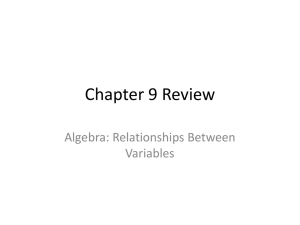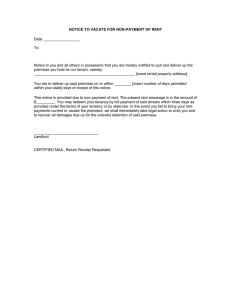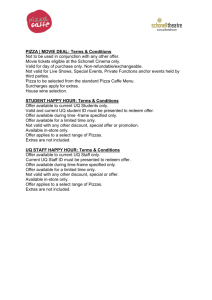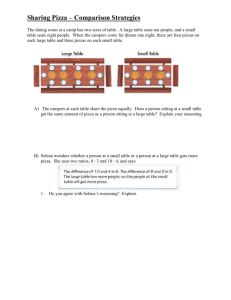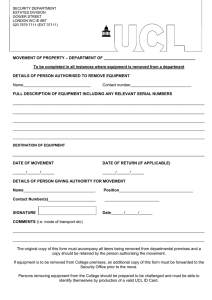Unit 03 - Know about costs, revenue and profit - Lesson element - learner task (DOC, 284KB) New
advertisement
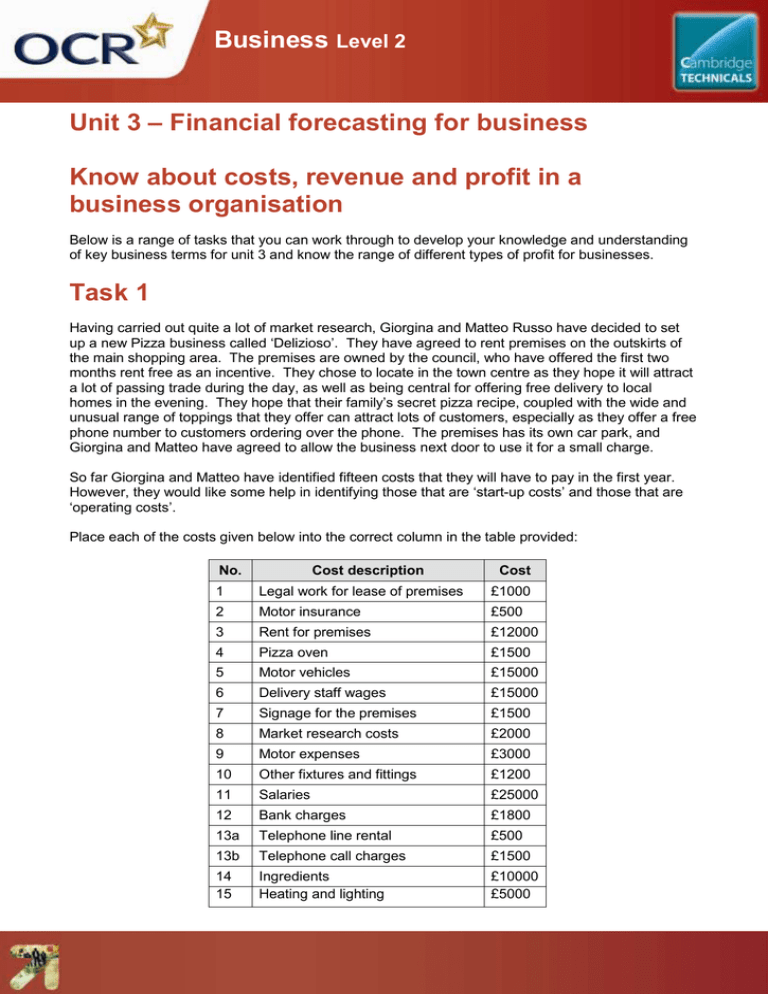
Business Level 2 Unit 3 – Financial forecasting for business Know about costs, revenue and profit in a business organisation Below is a range of tasks that you can work through to develop your knowledge and understanding of key business terms for unit 3 and know the range of different types of profit for businesses. Task 1 Having carried out quite a lot of market research, Giorgina and Matteo Russo have decided to set up a new Pizza business called ‘Delizioso’. They have agreed to rent premises on the outskirts of the main shopping area. The premises are owned by the council, who have offered the first two months rent free as an incentive. They chose to locate in the town centre as they hope it will attract a lot of passing trade during the day, as well as being central for offering free delivery to local homes in the evening. They hope that their family’s secret pizza recipe, coupled with the wide and unusual range of toppings that they offer can attract lots of customers, especially as they offer a free phone number to customers ordering over the phone. The premises has its own car park, and Giorgina and Matteo have agreed to allow the business next door to use it for a small charge. So far Giorgina and Matteo have identified fifteen costs that they will have to pay in the first year. However, they would like some help in identifying those that are ‘start-up costs’ and those that are ‘operating costs’. Place each of the costs given below into the correct column in the table provided: No. Cost description Cost 1 Legal work for lease of premises £1000 2 Motor insurance £500 3 Rent for premises £12000 4 Pizza oven £1500 5 Motor vehicles £15000 6 Delivery staff wages £15000 7 Signage for the premises £1500 8 Market research costs £2000 9 Motor expenses £3000 10 Other fixtures and fittings £1200 11 Salaries £25000 12 Bank charges £1800 13a Telephone line rental £500 13b Telephone call charges £1500 14 15 Ingredients Heating and lighting £10000 £5000 Business Level 2 Start up costs No. Cost description Operating costs Cost Total start up costs: No. Cost Description Cost Total operating costs: Task 2 Their business advisor, who works for their bank, has asked Giorgina and Matteo to provide a list of what they expect their fixed and variable costs to be. In the table below, identify whether each of the costs given in task 1 (above) is a variable cost (that changes in direct proportion to production of pizzas) or is a fixed cost (that remains the same regardless of changes in the production of pizzas). Once you have done this you should calculate the total fixed costs as well as the total variable costs. Variable costs No. Cost description Total variable costs: Fixed costs Cost No. Cost Description Total fixed costs: Cost Business Level 2 Finally once you have calculated the total fixed and variable costs you are asked to calculate the total costs for Delizioso: Fixed costs + Variable costs + = Total Costs = Task 3 Giorgina and Matteo have survived their first year in business, and would like to know what their Gross Profit and Net profit are. Some of their estimated costs weren’t very accurate, but their understanding of costs has improved greatly. They now know that during the year: They sold 25,000 pizzas during the year at an average price of £5 each They received other revenue (for car park) of £500 every month during the year They incurred direct costs of £1 per pizza produced. During the year they produced 26,000 pizzas, although for various reasons it was not possible to sell 1000 of them. They incurred indirect costs of £69,600 for the year Using this information complete the following boxes: REVENUE Sales Revenue (income from the sales of pizzas) Other revenue (income from car park ) Total Revenue (total income from all revenues) Direct costs (costs which can be traced directly back to the production process) Gross Profit (revenue – direct costs) Indirect costs (costs which cannot be attributed to production process) Net Profit (gross profit - indirect costs) These activities offer an opportunity for maths skills development. £
